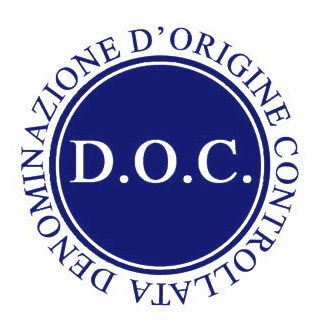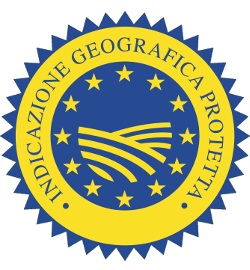Chianti Classico (Italy)
Chianti is Italy's most famous red wine.
Chianti Classico DOCG must contain at least 80% Sangiovese grapes.
Chianti Classico Flavors
Primary flavors are Sour Cherries and Wild Berries, with hints of Herbs, Flowers (Violets), Spices, Tea, and Minerals.
Red Cherry |
Strawberry |
Raspberry |
Cranberry |
Matured Sangiovese wines have flavors of Dark Berries, Black Cherry, Plum, and Tomato.
Blackberry |
Black Cherry |
Plum |
Tomato |
Herbs |
Violets |
Spices |
Tea Leaves |
Flavors from Maturation and Aging
Vanilla |
Coffee |
Cinnamon |
Tobacco |
Chianti Classico Profile
Chianti Classico is known to have good power, juicy fruits and soft tannins:
| SUGAR: | Dry (3 g/l) |
| BODY: | Medium Plus |
| TANNINS: | Medium |
| FRUIT: | Medium |
| ACIDITY: | Medium Plus |
| ALCOHOL: | 15% ABV |
| Serving temperature: 17-18°C (63-64°F) | |
Chianti Classico Food Pairing
Chianti Classico pairs well with both Italian and International food.
It loves Rich Pasta Dishes, Tomato Sauces, Stews and Mushroom Sauces.
Pasta |
Risotto |
Ham |
Salumi |
Pizza |
Hamburger |
Chicken |
Turkey |
Sausages |
Rabbit |
Pork |
Wild Boar |
Lamb |
Veal |
Game |
Beef |
Excellent Pairings
Grilled Vegetables.
Cured Meat. Prosciutto. Salami.
Tomato Sauce. Meat Sauce.
Truffle Sauce. Mushroom Sauce.
Rich Pasta. Rich Risotto. Pasta Cabonara.
Pasta Arrabbiata. Pasta with Truffles.
Rich Pizza. Pizza Picante. Lasagna.
Poultry. Rich Chicken. Turkey. Rabbit.
Hamburger. Sausages. Veal.
Stew. Wild Boar Stew. Ox Tail Stew.
Pork (Herb Grilled).
Lamb. Lamb Chops with Rosemary).
Red Meat. Braises. Roast Beef. Game.
Tuscan Specialities
Ribollita (Hearthy Soup).
Bistecca Fiorentina (Florentine Steak).
Risotto (with Meat or Mushroom Sauce).
Polenta with Black Truffle.
Grilled Portobello Mushrooms.
The Ideal Glass for Chianti Classico
The Bordeaux Glass was designed for enjoying fuller-bodied, tannic red wines.

|
They are taller than other red wine glasses, and has a slimmer bowl.
The slimmer bowl directs the wine to the back of your mouth for a maximum taste. The size also allows the bouquet of the wine to develop, smooth out rough edges, play down tannins, and allow the wine to achieve balance. |
If You Like Chianti Classico
You Might Also Like:
Italian Wine Laws DOC(G)
Italian DOC wine law and labels was introduced in 1963.
The Italian DOC system was designed to copy the French AOC system.
Each bottle must have a numbered government seal, and the DOC rules must define:
- Grape varieties
- Yield limits
- Grape ripeness
- Winemaking procedures
- Barrel and bottle maturation
- Tasting procedures

VdT Wines
VdT - Vino da Tavola (Table Wine)
VdT is the lowest level of wine classification in Italy. It is typically designed for high volume bulk wines intended for daily consuption.
In 2008, the EU adopted new rules for wines which included that producers are allowed to indicate the grape varieties and vintage on the label of table wine.
IGT Wines
IGT - Tipica Indicazione Geografica
(Typical geographical indication)

IGT wines are regulated by a set of production regulations and are distinguished by an area of origin which is generally rather large. The production regulations must contain:
- The name of the wine
- The name of the geographical area
- The name of the allowed grape varieties
- The maximum yield of grapes per hectare
- The minimum alcohol content of the wines
- The allowed types of wine
- The allowed production practices
DOC Wines
DOC - Denominazione di Origine Controllata
(Controlled designation of origin)

The DOC reulations regulates production areas, grape varieties, bottle and barrel aging, alcohol levels, and vinification techniques.
The production regulations of DOC wines must contain:
- The name of the appellation (the DOC)
- The name of the area of origin of the grapes
- The name of the area where the wine can be bottled
- The maximum yield of grapes and wine per hectare
- The minimum ripeness of the grapes
- The minimum alcohol content of the wines
- The production conditions (climate, soil, elevation)
- The types of training systems and pruning
- The minimum period of ageing in wood and in bottle
- How the sensory analysis examinations are to be carried out
DOC wines are subject to physical, chemical and organoleptic tests during the production stages. The test are carried out by special examination panels.
Both DOCG and DOC wines are also classified under DOP (Denominazione di Origine Protetta) which also covers other agricultural products.
DOCG wines
Denominazione di Origine Controllata e Garantita
(Controlled designation of origin guaranteed)

The DOCG was created in 1980 in response to the criticisms that there were too many DOCs and their quality was variable.
DOCG wines are guaranteed the highest quality in the Italian classification system.
DOCG contains the same regulations as the DOC. In addition, each DOCG-labeled wine must be bottled within the production area, and pass a wine quality tasting panel.
The DOCG wines are regulated by a set of production regulations and are distinguished by a very precise area of origin which may also include sub-areas covering a certain village, hamlet, farm, or vineyard.
A DOCG can be a category within a DOC area, for example, a DOCG may exist for a small area within a DOC area or for a version of a DOC appellation e.g. for the 'Superiore' version of a DOC wine.
The production regulations of DOCG wines include the same sort of rules as the DOC wines but with tighter parameters.
The law foresees that the DOCG status be awarded to wines which have been DOC wines for at least 5 years. DOCG wines must pass a double test with the second checks being carried out during the bottling stage. It is obligatory to indicate the vintage on the label (except for sparkling wines).
The Garantia addition also indicates that the quality has been checked by a tasting committee according to the rules that apply in the various DOCG. The designation is marked on the wine's label as well as a banner around the neck of the bottle, green banderole on white wine and pink on red wine.
Both DOCG and DOC wines are also classified under DOP (Denominazione di Origine Protetta) which also covers other agricultural products.
The are 78 Italian DOCG appellations (as of 2024)
PDO Products
PDO - Protected Designation of Origin
In Italian: DOP - Denominazione D'Origine Protetta

138 Italian products have DOP status(denominazione origine protetta)
DOP is a protection mark for the designation of origin, awarded by law, to food and wines which have particular characteristics, mainly or exclusively to the area where they are produced.
The geographical environment includes natural factors (climate, environmental characteristics) and human factors (production techniques and craftsmanship), which produce a unique product which cannot be replicated outside of a given area.
For a product to get a DOP status, all phases of production, processing and preparation must take place within a defined geographical area.
A producer of DOP prdoducts must follow strict rules set out in the production regulations. Compliance of these rules is checked by a specific body.
To distinguish DOP from IGP, the colours of the DOP logo have been changed from yellow and blue to yellow and red.
PGI Products
PGI Protected Geographical Indication
In Italian: IGP - Indicazione Geografica Protetta

IGP is a mark of origin given to wine and food products which have a certain quality, reputation from the geographical area in which they are produced.
Producers must follow strict rules set out in the regulation. Compliance of the rules is checked by a specific body.
TSG Products
TSG - Traditional Speciality Guaranteed
In Italian: STG - Specialita Tradizionale Garantità

TSG is a mark for traditional food products protected under European Union and/or United Kingdom law. It differs from PDO and PGI in that TSG does not certify that the protected product has a link to a specific geographical area.
4 Italian products are traditional speciality guaranteed (TSG):
About Chianti
|
Chianti was once known as a thick bottle wrapped in a straw basket called "Fiasco". Today most producers use standard bottles. By law, wine labelled Chianti must come from the Chianti region between Firenze and Siena. Chianti was established as a DOC in 1967 and became a DOCG in 1984. Chianti Classico became a separate DOCG in 1996. Chianti DOCG must contain at least 70% Sangiovese grapes. Chianti Classico DOCG must contain at least 80% Sangiovese. |

|
Chianti DOCG Areas
- Chianti Colli Aretini DOCG
- Chianti Colli Fiorentini DOCG
- Chianti Colline Pisane DOCG
- Chianti Colli Senesi DOCG
- Chianti Colli Montalbano DOCG
- Chianti Montespertoli DOCG
- Chianti Rufina DOCG
Chianti Classico DOCG
Chianti Classico is a separate DOCG and not a subzone of any Chianti DOCG.
Chianti Classico DOCG is produced in the old "classic" part of Chianti.
Sangiovese DOC(G) Regions
The Sangiovese wines from Toscana (Tuscany) are world famous.
Montalcino, Toscana
Rosso di Montalcino DOC - 100% Sangiovese
Brunello di Montalcino DOCG - 100% Sangiovese
Montepulciano, Toscana
Rosso di Montepulciano DOC -Min 70% Sangiovese
Nobile di Montepulciano DOCG - Min 70% Sangiovese
Chianti, Toscana
Chianti DOCG - Min 70% Sangiovese
Chianti Classico DOCG - Min 80% Sangiovese
Other Toscana Regions
Montecucco Sangiovese DOCG - 90-100% Sangiovese
Suvereto Sangiovese DOCG - 85-100% Sangiovese
Morellino di Scansano DOCG - 85-100% Sangiovese
Carmignano DOCG - Min 50% Sangiovese
Emilia-Romagna
Sangiovese di Romagna DOC - 100% Sangiovese
Umbria
Montefalco DOC - 60-80% Sangiovese
Torgiano Riserva DOCG - Min 70% Sangiovese
Body Summary
Medium Body: Chianti. Sangiovese di Romagna.
Medium to Full: Chianti Classico. Rosso di Montalcino. Rosso di Montepulciano. Morellino di Scansano. Montefalco.
Full Body: Brunello di Montalcino. Nobile di Montepulciano. Montecucco Sangiovese. Suvereto Sangiovese. Torgiano Riserva. Carmignano.
Black Grapes |
White Grapes |

65% Sangiovese |

6% Trebbiano |
Rosé Wines |
Sweet Wines |

|

|


Denominations
Toscana has 11 DOCGs and 41 DOCs. Below is a list of the DOCGs.
Sangiovese:
Chianti DOCG (70% Sangiovese)
Chianti Classico DOCG (80% Sangiovese)
Brunello di Montalcino DOCG (100% Sangiovese)
Vino Nobile di Montepulciano DOCG (70% Sangiovese)
Montecucco Sangiovese DOCG (90% Sangiovese)
Morellino di Scansano DOCG (85% Sangiovese)
Super Tuscan:
Carmignano DOCG (Sangiovese, Cab Sauvignon/Franc, Merlot)
Suvereto Rosso DOCG (Cab Sauvignon, Merlot)
Val di Cornia Rosso DOCG (Sangiovese, Cab Sauvignon, Merlot)
White:
Vernaccia di San Gimignano DOCG (85% Vernatcha)
Passito:
Elba Aleatico Passito DOCG (100% Aleatico)














